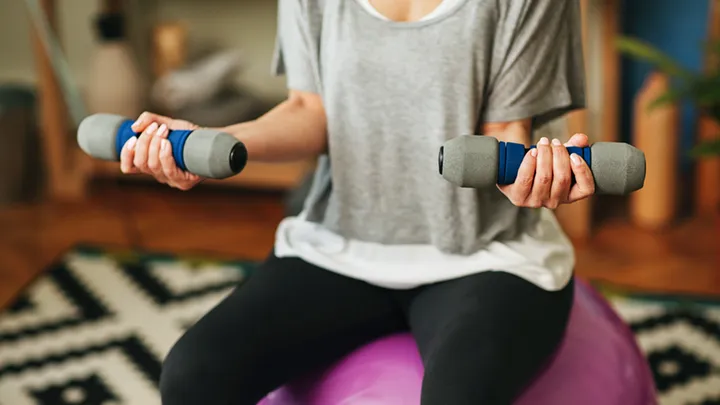Establishing healthy habits is one of the key ingredients of relieving anxiety and improving mood. Daily habits could include anything from drinking enough water and eating a well-balanced diet, to taking leisurely walks.
Establishing morning and evening routines that include journaling or meditation may offer relief. This allows them to track their symptoms over time and identify patterns, which in turn can provide greater understanding of emotions as well as more effective coping mechanisms.
1. Deep Breathing
Breathing may seem effortless, but it’s one of the most powerful tools we have to relax our bodies and minds. There have been various breathing techniques used for thousands of years that help induce relaxation responses in our body and mind.
Anxiety alters our breathing pattern, leading to shallower and quicker breaths than usual, activating our sympathetic nervous system (which regulates our fight or flight response). This can cause symptoms including increased heart rate, dizziness, muscle tension and more.
Deep breathing involves taking slow, deeper breaths from your abdomen in order to counteract short, rapid breaths that often accompany stress and anxiety. To practice it effectively, sit comfortably with eyes closed while placing one hand on your stomach and one on your chest – with each inhale focused on filling your lungs as much as possible, with exhales spending more time exhaling out; some people use counting as an aid – though counting is not required!
Equal breathing or nadi shodhana, one of the ancient yoga practice pranayama techniques, involves inhaling for 4 counts, holding for 6, exhaling for 6, and repeating this cycle until complete.
2. Journaling
Journaling can help those prone to obsessive, negative or ruminative thoughts manage them more effectively. By writing them down and out of your head onto paper, it allows you to identify patterns and emotions related to those thoughts as well as come up with solutions for shifting them toward more useful thought patterns. Writing your worries down also gives you an opportunity to challenge them directly and come up with strategies for shifting those unhelpful ones towards something more productive.
At times, anxiety stems not from what’s happening right now but from what might occur in the future. For example, you could be concerned that losing your job might occur; in such a situation, writing out potential alternatives would help prepare for such eventualities if necessary.
People may find it helpful to start their journal journey with one that includes daily checks-in and encouraging quotes, often called guided journals, which may provide invaluable support for anxiety sufferers. But plain, blank journals also work; do what works for you!
3. Yoga
Yoga is a low-impact, stress-reducing exercise that stimulates endorphin production to enhance mood and reduce stress levels, strengthening mind-body connections for more mindfulness and self-regulation.
Recent research indicates that one month of yoga helped improve anxiety for those diagnosed with generalized anxiety disorder, although its efficacy wasn’t comparable with cognitive behavioral therapy, a form of talk therapy which helps people identify negative thought patterns and find more effective ways to face challenges.
Studies have demonstrated the efficacy of yoga to combat depression and anxiety symptoms among those suffering from chronic or treatment-resistant anxiety disorders, including rumination and worry. Furthermore, its benefits lasted four months post program completion.
Yoga can also provide an easy way to increase physical activity when dealing with depression and anxiety, making the path back to wellness much less daunting. Classes are easily available – some even free or low cost! Yoga benefits people of all ages and fitness levels. People can incorporate it into everyday activities like taking a stroll through their neighborhood or doing breathing exercises while watching television.
4. Meditation
Meditation may not be a permanent solution to depression, but it can help manage anxiety symptoms by training your brain not to focus on negative and anxious thoughts. According to one study conducted on people meditating, they experienced relief from ruminative thought patterns which cause anxiety and stress.
To practice meditation, begin by sitting comfortably and closing your eyes. Concentrate on various parts of your body tensing and relaxing them slowly and methodically – for instance starting with your toes (focusing on sole heel top of foot), progressing onto legs pelvis abdomen lower back chest shoulder arms face head face neck
Doing a body scan involves moving around or lying still on a bed or floor while paying close attention to any sensations you feel in your body, being as descriptive as possible and pausing with each sensation for several seconds before moving onto another part. Or try mindfulness meditation by simply being aware of any thoughts and emotions that arise, without passing judgement on them.
5. Yoga Nidra
If the idea of practicing traditional yoga in a studio doesn’t appeal, another form known as Yoga Nidra may still offer benefits of mind-body integration. Instead of physical stretching and holding poses in order to reach deep relaxation and reach a state between sleep and wakefulness.
At the start of a session, participants are instructed to lie on a mat or blanket and make themselves as comfortable as possible before being guided through body assessments and visualization exercises by a guide, including visualizing relaxing their body and letting go. Following this phase, a Sankalpa is chosen – or resolution for self-improvement – before repeating it three times with full dedication and faith.
One study concluded that participants who regularly participated in 30 minutes of yoga nidra experienced lower stress and anxiety levels compared to those practicing traditional yoga routines alone, as well as reduced alpha EEG activity and GSR levels.
